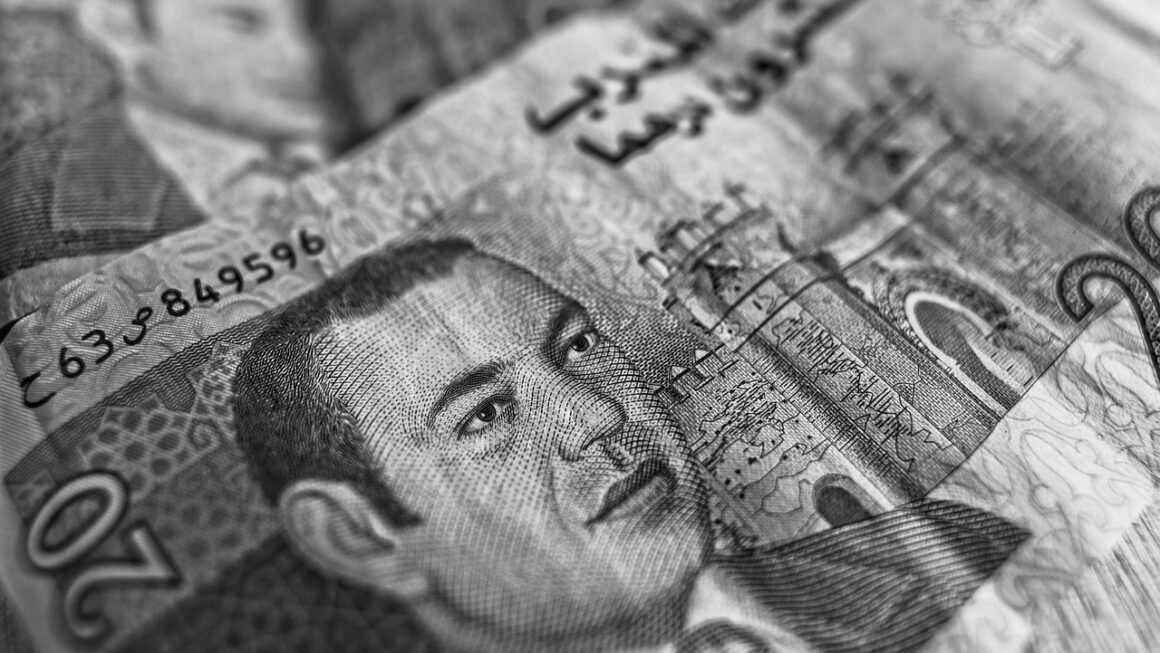Navigating the world of personal finance can feel overwhelming, especially when it comes to credit cards. With so many options available, each boasting different rewards, interest rates, and fees, it’s crucial to understand how these financial tools work to make informed decisions. This comprehensive guide will break down the essentials of credit cards, helping you leverage their benefits while avoiding potential pitfalls and building a strong credit future.
Understanding Credit Cards
What is a Credit Card?
A credit card is a thin piece of plastic (or increasingly, a virtual card) that allows you to borrow money from a financial institution to make purchases. The card issuer extends a line of credit to you, which you can use up to a certain limit. Unlike debit cards, which draw directly from your bank account, credit cards create a short-term debt that you’re expected to repay, typically monthly.
- Key Concept: Credit cards aren’t free money. They’re a short-term loan that comes with interest charges if you don’t pay your balance in full and on time.
- Example: Imagine you use your credit card to buy a new laptop for $1,000. You now owe your credit card company $1,000. If you pay the entire balance before the due date, you won’t accrue interest. However, if you only pay a portion, the remaining balance will accrue interest until it’s paid off.
How Credit Cards Work
The process of using a credit card is relatively straightforward:
- Application: You apply for a credit card, providing information about your income, credit history, and employment.
- Approval: The issuer reviews your application and approves or denies it based on your creditworthiness.
- Credit Limit: If approved, you’re assigned a credit limit – the maximum amount you can charge to the card. This limit is based on factors like your income and credit score.
- Making Purchases: You use your card to make purchases at participating merchants, either online or in person.
- Billing Cycle: The card issuer sends you a monthly statement detailing your purchases, payments, fees, and interest charges.
- Payment: You make a payment towards your balance by the due date. You can pay the full balance, the minimum payment, or any amount in between.
- Interest Charges (if applicable): If you don’t pay the full balance each month, you’ll be charged interest on the remaining balance. The interest rate is known as the Annual Percentage Rate (APR).
Types of Credit Cards
Credit cards come in various forms, each tailored to different needs and financial situations.
- Rewards Cards: Offer rewards such as cash back, travel points, or merchandise for every dollar spent.
Example: A card offering 2% cash back on all purchases. Spending $1,000 on the card earns you $20 in cash back.
- Travel Cards: Designed for frequent travelers, offering benefits like airline miles, hotel points, and travel insurance.
Example: A card that earns you 2 miles per dollar spent on airlines and hotels, and 1 mile per dollar spent on everything else.
- Balance Transfer Cards: Allow you to transfer high-interest debt from other credit cards to a card with a lower introductory APR.
Example: Transferring a $5,000 balance from a card with a 20% APR to a balance transfer card with a 0% APR for 12 months.
- Secured Cards: Require a security deposit, often used to build or rebuild credit.
Example: Paying a $500 security deposit to obtain a secured credit card with a $500 credit limit.
- Student Cards: Designed for college students with limited credit history.
- Business Cards: Designed for small business owners, offering benefits tailored to business expenses.
Credit Scores and Credit Card Approval
The Importance of a Good Credit Score
Your credit score is a numerical representation of your creditworthiness, reflecting your ability to repay debt. It plays a crucial role in:
- Credit Card Approval: A good credit score significantly increases your chances of being approved for credit cards with favorable terms (lower APRs, higher credit limits, and better rewards).
- Interest Rates: Your credit score directly impacts the interest rate you’ll be offered on credit cards. Higher scores typically mean lower rates.
- Loan Approvals: Your credit score is a key factor in getting approved for loans, such as mortgages, auto loans, and personal loans.
- Rental Applications: Landlords often check credit scores as part of the rental application process.
- Insurance Rates: In some states, insurance companies use credit scores to determine premiums.
Factors Affecting Your Credit Score
Several factors influence your credit score, with payment history and credit utilization being the most significant.
- Payment History (35%): Paying your bills on time is the most important factor. Late payments can significantly damage your credit score.
- Credit Utilization (30%): This is the amount of credit you’re using compared to your total available credit. Experts recommend keeping your utilization below 30%.
* Example: If you have a credit card with a $1,000 limit, aim to keep your balance below $300.
- Length of Credit History (15%): A longer credit history generally leads to a higher score.
- Credit Mix (10%): Having a mix of different types of credit (e.g., credit cards, loans) can positively impact your score.
- New Credit (10%): Opening too many new credit accounts in a short period can negatively affect your score.
Improving Your Credit Score
Building or improving your credit score takes time and consistent effort.
- Pay Bills on Time: Set reminders and automate payments to avoid late fees and negative marks on your credit report.
- Keep Credit Utilization Low: Pay down balances regularly and avoid maxing out your credit cards.
- Become an Authorized User: Ask a trusted friend or family member with good credit to add you as an authorized user on their credit card.
- Apply for a Secured Credit Card: If you have limited or poor credit, a secured credit card can help you establish or rebuild your credit.
- Check Your Credit Report Regularly: Review your credit reports from all three major credit bureaus (Equifax, Experian, TransUnion) for errors and dispute any inaccuracies. You can get a free copy of your credit report from AnnualCreditReport.com.
Managing Credit Card Debt
Understanding APR (Annual Percentage Rate)
The APR is the annual interest rate you’re charged on your credit card balance if you don’t pay it off in full each month. It’s crucial to understand the different types of APRs.
- Purchase APR: The standard interest rate applied to purchases you make on your card.
- Balance Transfer APR: The interest rate applied to balances you transfer from other credit cards. Often, this is a promotional 0% rate for a limited time.
- Cash Advance APR: The interest rate applied to cash advances, which are typically higher than purchase APRs.
- Penalty APR: A higher interest rate that’s triggered when you make a late payment or violate the terms of your credit card agreement.
Avoiding Interest Charges
The best way to avoid interest charges is to pay your credit card balance in full by the due date each month.
- Track Your Spending: Use budgeting apps or spreadsheets to monitor your expenses and ensure you’re not overspending.
- Set Payment Reminders: Set up automatic payment reminders to avoid missing due dates.
- Consider a Balance Transfer: If you have high-interest credit card debt, consider transferring it to a card with a lower APR or a 0% introductory rate. Be aware of balance transfer fees.
- Negotiate a Lower Interest Rate: If you have a good credit history, you may be able to negotiate a lower interest rate with your credit card issuer.
Strategies for Paying Off Debt
If you’re carrying a credit card balance, develop a plan to pay it off as quickly as possible.
- The Snowball Method: Focus on paying off the smallest debt first, regardless of the interest rate. This provides quick wins and motivates you to continue.
- The Avalanche Method: Focus on paying off the debt with the highest interest rate first, saving you the most money in the long run.
- Debt Consolidation: Consider consolidating your credit card debt into a personal loan with a lower interest rate and a fixed payment schedule.
- Credit Counseling: If you’re struggling to manage your credit card debt, seek help from a reputable credit counseling agency.
Credit Card Rewards and Benefits
Maximizing Rewards Programs
Many credit cards offer rewards programs that can provide significant value if used strategically.
- Choose the Right Card: Select a card that aligns with your spending habits. If you spend a lot on travel, a travel rewards card might be the best choice. If you prefer cash back, opt for a cash back card.
- Understand the Rewards Structure: Pay attention to the different bonus categories and earning rates.
- Redeem Rewards Wisely: Redeem your rewards in the most valuable way possible. For example, travel points might be worth more when redeemed for flights or hotels compared to cash back.
- Monitor Bonus Offers: Take advantage of limited-time bonus offers to earn extra rewards.
- Pay Attention to Annual Fees: Consider whether the rewards you earn outweigh the annual fee.
Other Credit Card Benefits
Besides rewards, credit cards often come with a variety of other benefits, such as:
- Purchase Protection: Protects your purchases against damage or theft for a certain period.
- Extended Warranty: Extends the manufacturer’s warranty on eligible purchases.
- Travel Insurance: Provides coverage for travel-related issues, such as trip cancellation, baggage loss, and emergency medical expenses.
- Rental Car Insurance: Covers damage to rental cars when you use your card to pay for the rental.
- Fraud Protection: Protects you from unauthorized charges and limits your liability.
Example Scenarios
- Traveler: A frequent traveler could use a travel rewards credit card to earn points on flights and hotels, which can then be redeemed for free travel. They could also leverage travel insurance benefits offered by the card.
- Cash Back Saver: Someone who wants to save money on everyday purchases could use a cash back credit card to earn rewards on groceries, gas, and other expenses.
- Credit Builder: An individual with no credit history could start with a secured credit card, using it responsibly and paying it off on time to build a positive credit history.
Security and Fraud Protection
Protecting Your Credit Card Information
Protecting your credit card information is crucial to prevent fraud and identity theft.
- Keep Your Card Secure: Store your credit card in a safe place and avoid leaving it unattended.
- Monitor Your Statements: Review your credit card statements regularly for any unauthorized charges.
- Use Strong Passwords: Use strong, unique passwords for your online credit card accounts.
- Be Wary of Phishing Scams: Be cautious of suspicious emails or phone calls asking for your credit card information.
- Shop Securely Online: Only shop on websites that use encryption (look for “https” in the website address).
- Shred Unnecessary Documents: Shred any documents that contain your credit card information, such as old statements and receipts.
What to Do if Your Card is Lost or Stolen
If your credit card is lost or stolen, take immediate action.
- Report it Immediately: Contact your credit card issuer as soon as possible to report the loss or theft.
- Request a New Card: Request a new credit card with a different account number.
- Review Your Account Activity: Carefully review your account activity for any unauthorized charges.
- File a Police Report: File a police report if you suspect identity theft.
Understanding Fraud Liability
Federal law limits your liability for unauthorized charges on your credit card.
- $50 Limit: Your maximum liability for unauthorized charges is $50, but most credit card issuers will waive this fee if you report the loss or theft promptly.
- Zero Liability Policies: Many credit card issuers offer zero liability policies, which means you won’t be responsible for any unauthorized charges.
Conclusion
Credit cards are powerful financial tools that can offer numerous benefits, including rewards, purchase protection, and the ability to build credit. However, it’s crucial to use them responsibly, manage debt effectively, and protect your information to avoid potential pitfalls. By understanding the basics of credit cards, choosing the right card for your needs, and practicing good financial habits, you can leverage the advantages they offer and achieve your financial goals. Remember to always prioritize paying your balance in full and on time to avoid accumulating high-interest debt.



